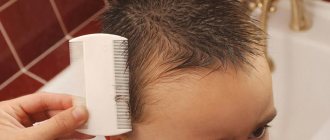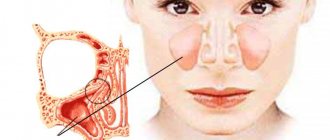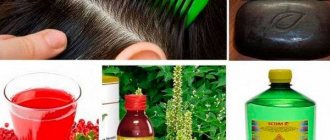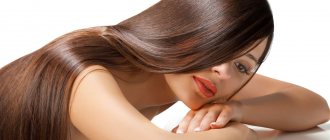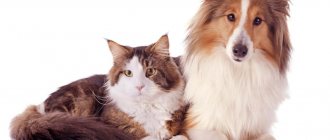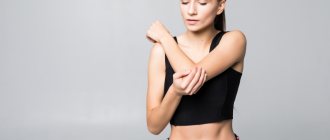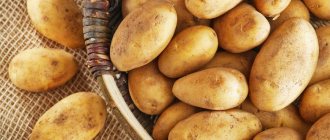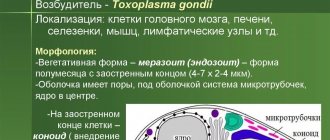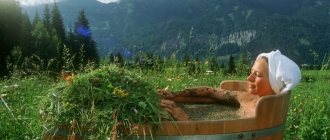General information
Pediculosis is an infestation of the hairline with lice.
Parasites settle mainly on the head, feed on human blood and are easily transmitted to others. Pediculosis in children is a parasitic disease. Caused by body, pubic or head lice. Cases of head lice infestation are more common. The danger of lice lies in the fact that scratching the itchy areas creates wounds through which the infection penetrates. In schools and kindergartens, nurses regularly examine children. At the first signs of head lice, the child is isolated until complete recovery; the parents of the remaining children are informed about the disease in the group. Treatment begins immediately to prevent infection of others and protect the baby from complications.
Where does pediculosis come from in children?
You can only become infected with lice through direct contact, since the insects cannot jump or fly. Insects hold on to the hair with special hooks on their legs, and when the opportunity arises, they move from one person to another. It takes a little time to change the host, since, as already said, lice move quite quickly. Pediculosis is more often observed in children and adolescents because they often interact closely during play, joint projects, and physical exercise.
Interesting fact!
An unusual study was recently conducted in Argentina. After the World Health Organization declared COVID-19 a pandemic in March 2021, the Argentine government imposed a mandatory lockdown involving distance learning in schools. After the end of quarantine, a survey was conducted, according to which the prevalence of head lice during this period decreased by 25%. This confirms that the main route of lice infection is through close contact between children.
Head lice do not live long outside their host. Several studies in schools have shown that even in classrooms where children with head lice were identified, no live lice were found on surfaces or floors. In addition, it has not yet been scientifically proven that parasite infection can occur through combs, hairpins and headphones. However, infectious disease specialists admit that there is still a small probability of such a transmission route.
A common myth is that children in kindergarten become infected with lice through carpets, play mats and soft toys. If children bring lice from preschool institutions, it is only because during play they come into close contact, giving lice an excellent opportunity to crawl from head to head.
Symptoms of lice
The first signs of lice are increasing itching of the scalp. When examining the hair, nits (lice eggs) are found, which are whitish in color and difficult to remove. There are especially many nits on the back of the head or behind the ears. If there are few parasites, parents cannot always detect them on their own, so the help of qualified doctors is mandatory. Pediculosis is characterized by the following features:
- increasing itching, which leads to significant wounds and scratching;
- increased irritability, sleep disturbance;
- hair tangling, brittleness and dryness;
- the appearance of an allergic rash on the face and other parts of the body;
- the presence of reddish spots from bites on the scalp.
If the disease is not treated, then under the influence of lice waste products, the hair becomes tangled.
Against the background of decreased immunity, another infection occurs, pyoderma and eczema occur, lymph nodes become enlarged, and the temperature may rise. In addition to head lice, pubic lice also occurs. Its frequency in the population is lower, but parents should still be aware of the symptoms. The disease is characterized by itching in the genital area; after an insect bite, bluish nodules up to 1 cm in diameter appear on the stomach and thighs.
Even less common is body lice, when infection occurs with body lice living in bedding and clothing. The main symptoms of this disease are itchy reddish spots and papules on the body. As the disease progresses, the skin becomes rough, peels, and pigmented spots appear that do not go away and remain for life.
Lice and pediculosis: characteristics of the insect and the disease
Lice are ectoparasites that have been known since ancient times. It is difficult to immediately determine their presence in the hair. Parasites have an inconspicuous appearance:
- small body 4–5 mm;
- gray-brown color, merging with the hair color (from gray natural to brown in a well-fed state).
Insects live exclusively on the body of people and some anthropoid apes. This is due to centuries-old adaptation to living on the round section of hair. Lice are transmitted by contact, crawling from one hair to another. Where do lice come from, how can you get infected with them, you will find a detailed answer on our website.
The insect has legs with claws that allow it to be firmly held in the hair. The louse is guided solely by smell. Vision is an unnecessary addition, so the eyes are atrophied. The organ responsible for the insect's sense of smell is the antennae.
Lice feed on blood. The powerful mouth of the piercing-sucking type is equipped with needles for piercing the skin and a proboscis that operates on a pumping principle. The insect is not voracious, but it causes a lot of inconvenience to the “owner”:
- due to rapid reproduction (140 eggs per full life cycle of 45 days);
- injection of toxins into the blood during biting (causing severe itching, subsequent scratching, and formation of wounds);
- transmission of dangerous diseases (typhus, fever).
We recommend reading: lice wounds on the head, what parasite bites look like.
Pediculosis does not mean primary infection by insects. The disease is recognized as a complex of symptoms typical of the numerous presence of parasites. In medicine, pediculosis is a complex of manifestations caused by lice:
- itching;
- purulent rashes;
- allergic reactions;
- skin formations.
Important point! The appearance of an insect in the hair is not considered a disease. Violent vital activity causing clinical manifestations are signs of pediculosis. You often find out that you have lice after some time. You will find how long the incubation period of pediculosis in humans lasts on our website.
Causes of lice
The cause of lice in children is lice that live on the human body in the hairline.
The source of infection is the patient; transmission of parasites occurs through close contact. In this regard, children attending kindergartens, schools, and clubs are at risk for head lice. Girls with long hair are especially susceptible. Infection is also possible through the use of hygiene products that belong to the patient. This is how lice get onto a child’s skin in a hairdresser’s salon (if the workers do not properly handle the tools). There is a risk of infection in transport, bathhouses, and swimming pools.
Doctors also identify factors that increase the likelihood of developing head lice:
- weakened immune system;
- unfavorable living conditions;
- failure to comply with hygiene rules.
Most people believe that lice are a sign of a dysfunctional family in which a child lives. But that's not true. Children living in normal conditions can also become infected. It is important what environment the baby is in and what his state of health is.
What are lice?
The life cycle of these insects lasts approximately three weeks (12-28 days). During her life, a female can lay up to 300 eggs (8-10 per day). These insects cannot fly, jump or swim. They crawl, moving along the hair with the help of pointed hooks on their legs.
The mobility of lice depends on the ambient temperature. In conditions close to the temperature of the human body, they move quite quickly, covering about 33 cm per minute, which is a very good speed considering their millimeter size.
Without a host, parasites can live only 2-3 days. Again it all depends on the temperature. At 35–37 °C, a human louse can survive one day without feeding. At a temperature of 10-20 °C, when the metabolic processes of insects slow down, it takes a little longer. It is believed that lice die at a temperature of -20°. Insects calmly survive hair washing. They cling tightly to the hair and close the holes on the body through which they breathe
Interesting fact!
Human lice have an amazing resistance to ionizing radiation (radiation) compared to other insects. A radiation dose of 150,000 rads can kill a louse in only a week. For comparison, exposure of a person to a radiation dose of 200-400 rad causes radiation sickness.
Diagnosis of pediculosis
No special tests are required to detect lice in hair.
Parents and nursing staff should regularly examine their child's hair. The diagnosis of lice is confirmed by the detection of nits in the hair of adults. Nits are often confused with dandruff. An important difference is that lice eggs do not separate from the hair with a light touch; force is required. When nits are crushed, a clicking sound is heard. To make a final diagnosis in doubtful cases, a Wood's lamp is used: in its rays, nits glow blue. When pediculosis is accompanied by skin lesions, differential diagnosis with other dermatological diseases is required: seborrheic dermatitis, pyoderma, psoriasis, etc. Only a qualified dermatologist can carry it out.
Folk remedies
When there were no modern drugs, pediculosis was treated with kerosene. This product does kill lice, but it is toxic and damages the hair. Therefore, it is not recommended to use it. The same can be said about Dichlorvos, which can not only lead to burns and damage to the hair follicles, but also cause serious poisoning.
There are several folk recipes that can be used as an aid in the treatment of head lice.
- • Remedies such as vinegar solution or alcohol are 60% effective. They dissolve the glue that attaches the nits to the hair. This makes them easier to remove.
- • Tar or dust soap destroys insects. They wash their hair with it and wrap it in a towel for 2 hours.
- • Fresh cranberry juice can be rubbed into the scalp alone or mixed with liquid honey.
- • Effective essential oils: tea tree, lavender, geranium, black cumin. They need to be diluted with burdock oil and made into a hair mask.
Treatment of pediculosis
To treat head lice in children, special shampoos and medications are used. The hair is treated with medications, and then the dead lice and nits are combed out. For children, drugs in the following forms are suitable:
- soap;
- cream;
- shampoo;
- spray;
- cleaning liquid;
- lotion.
Antiparasitic agents attack the nervous system of insects and paralyze them, after which the adults die and are easily combed out.
However, nits turn out to be resistant to these agents, so after 1-2 weeks the treatment must be repeated. The traditional treatment regimen involves applying the medication to the hair. Then the head is wrapped in polyethylene and a towel and left for 1-2 hours (be sure to read the instructions). The product is washed off with regular shampoo, then the paralyzed lice are combed out from damp hair.
Not all medications are suitable for children. Therefore, how to treat pediculosis in children, check with a specialist. Products containing permethrin and phenothrin should be avoided in children under 3 years of age with sensitive skin. Medicines containing malathion are quite toxic, so they are not suitable for skin allergies when the permeability of the dermis is increased. A dermatologist will help you choose the right drug.
What are nits?
A full-fledged individual lives up to 3-4 weeks. Adult females begin laying eggs approximately 24 hours after their last moult. She lays only one egg at a time, as each one takes up approximately 20% of her body. However, during the day the female can lay an average of 5 eggs.
Egg laying occurs quite quickly. The female finds a suitable place on the hair closer to the scalp and secretes a secretion that glues the nit to the hair. She then lays an egg in the droplet of secretion, while moving forward to avoid sticking to the hair. Favorite places for nits to be deposited are behind the ears and on the back of the head, as close to the scalp as possible, where there is enough warmth and moisture for optimal development of nits
A newly laid egg may look brownish, but it is actually almost transparent. The nit appears brown because its surface acts like a lens, reflecting the color of the surrounding hair. This is to make the eggs more difficult to detect. The hatched nits become whitish and are easy to see with the naked eye.
Prevention of head lice
Preventive measures are based on careful attention to the child’s health:
- regular head examination;
- use of personal hygiene products;
- Regular washing and combing of hair.
Remember, if lice is confirmed, all family members will have to be treated.
If there is constant itching of the scalp, consult a dermatologist about head lice. SM-Doctor employs qualified specialists who will quickly establish the correct diagnosis and prescribe the necessary treatment.
How to properly diagnose lice?
When checking a child's head for lice, it is not enough to simply examine the hair and scalp. It is best to use a fine-toothed comb for this purpose. This method is much more efficient and will save your time. The distance between the teeth of the comb should not exceed 0.2 mm and be the same along the entire length (such combs are often sold in pharmacies complete with pediculicides).
You can comb both dry and wet hair. You can also use hair conditioner. It makes hair smooth and slippery, making it difficult for lice to move around and making combing much easier
It is better to inspect and comb the child's head in daylight or good artificial lighting. If you have poor eyesight, you can use a magnifying glass. It is necessary to comb your hair over a bathtub or a white towel, so insects are easier to spot.
The drug "Paranit"
One of the most effective remedies for pediculosis is considered to be “Paranitis”, which belongs to the class of low-hazard compounds. It is available in the form of lotion, shampoo, spray. For children from 1 year of age there is a special release form - “Paranit Sensitive”. The active ingredients are mineral oils and dimethicone. The product blocks the access of oxygen, destroying adult insects and nits.
“Paranite” is safe for hair and does not cause allergic reactions or poisoning. Contraindications include only pregnancy and breastfeeding, as well as serious skin diseases or skin damage. When used correctly, the product does not cause side effects. It can even be used to prevent infection.
Different forms of release of the product have some application features.
- • “Paranit Sensitive” destroys lice and nits. Suitable for use by children over 1 year of age and pregnant women. After application, it envelops the parasites, blocking their breathing. Usually one treatment is enough, but if necessary it can be repeated after a week.
- • “Paranit Repellent” is a liquid solution in the form of a spray. It is applied to the hair after shampooing. It protects against lice infestation as it repels insects and prevents them from attaching to the hair.
- • “Paranit Shampoo” is effective against adult insects, as well as against larvae and eggs after 10 minutes of contact with the product.
- • Paranit Spray is the easiest to use. It is sprayed onto the hair. After this, dead insects need to be combed out with a special comb. The product is odorless and safe for the scalp.
Pediculosis is a common and rather unpleasant parasitic disease caused by lice. It is easy to become infected and insects reproduce quickly. But if you take the necessary measures in time, you can easily get rid of them.
